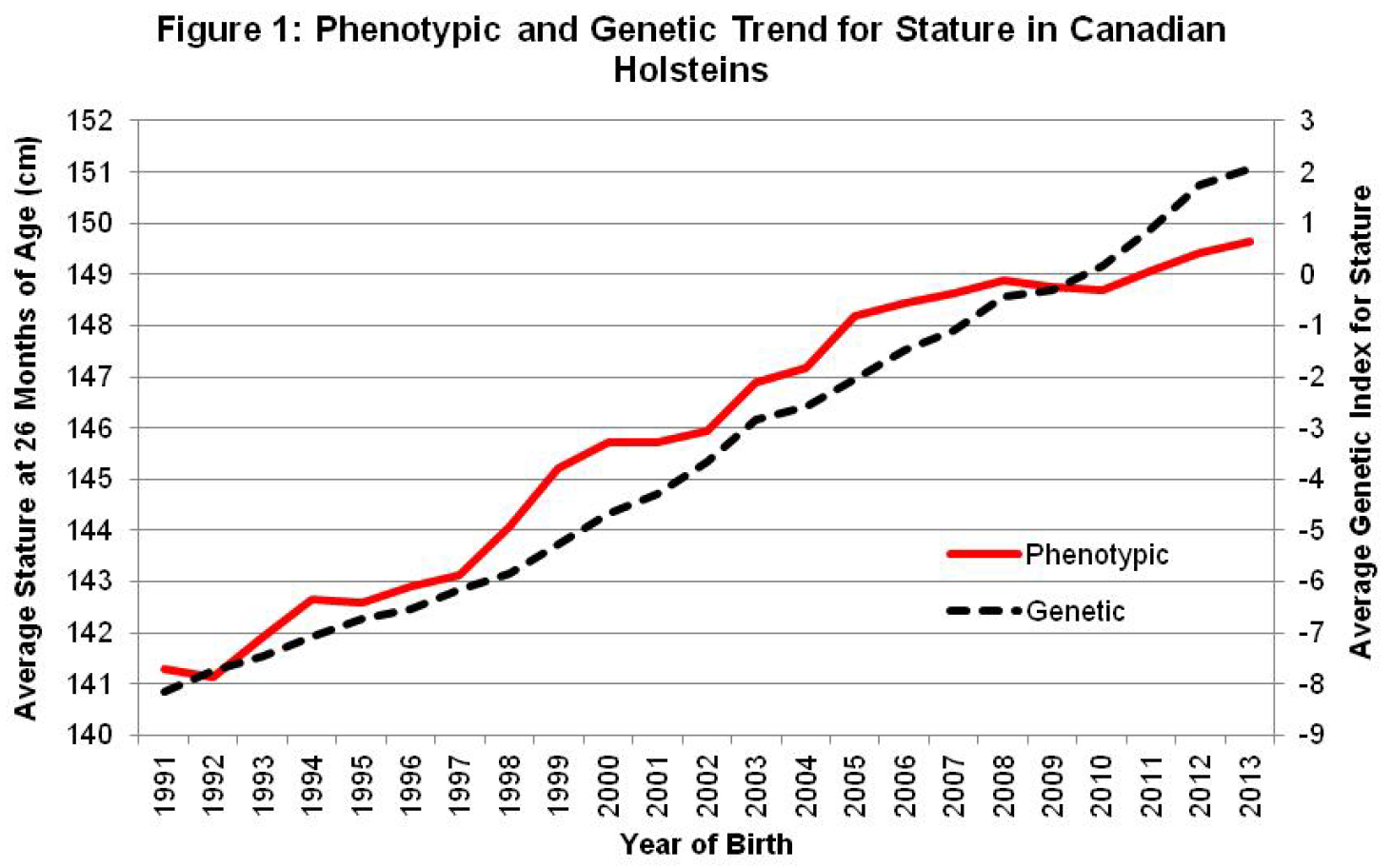Stature; enough is enough?
In the past decades Holsteins have become taller. Have a look at the figure below, showing the average stature of Canadian Holsteins (source: CDN - Canadian Dairy Network) in the period between 1991 and 2013.

The CDN also found a significant positive correlation between stature and traits like total type, udder, feet & legs. Selection on stature will increase these traits. It also looks like taller cows get more benefit when they are classified on type traits, udder and feet & legs.
The correlation between stature with several conformation traits will be different in other countries but the trend stays the same. Reasons for this can be found in:
- different definition of each individual trait
- difference in system of classifying cows in each country
- housing systems in each country are different
However, nowadays in some cases the down side of taller cows becomes visible. Possible problems certain farmers could face:
- cows do not fit in existing barns or milking parlours
- problems to stand up
- hoof problems
- higher maintanance
- less efficient with feed
- more heat stress
On the other hand stature has a negative correlation with fertility, calving ease and productive life according to the information of the CDN. Therefore the trait stature should be considered as an optimum and not as a trait to maximize. In the summer 2017 update of the TPI formula stature got a negative weighting because of these concerns.
Due to the correlation with important traits like udder and feet & legs, we expect that stature will not decrease in the near future. The interest in bulls breeding medium or smaller sized daughters might increase. In individual cases corrective mating might even be a solution for problems, using bulls with negative stature, see the previous news item.
AI Total has twenty bulls in it’s line-up that have a score for stature below +1,00. Breeders who find this important, have plenty to choose from!
Please don’t hesitate, if you wish to give your opinion here.